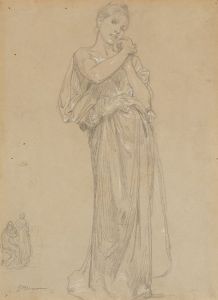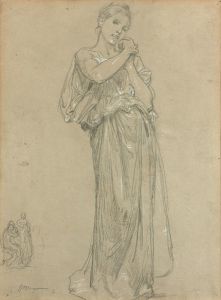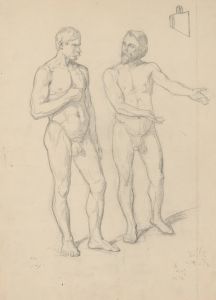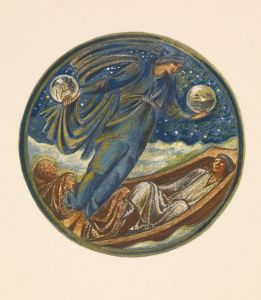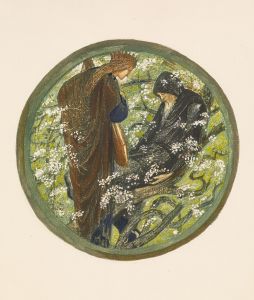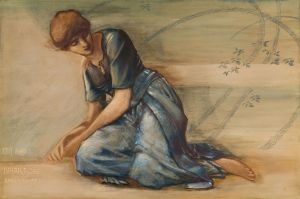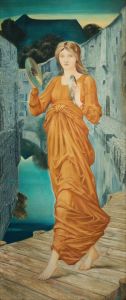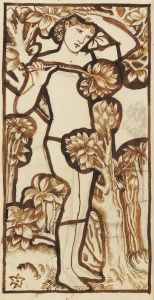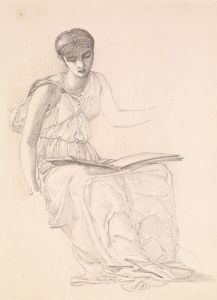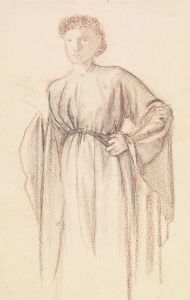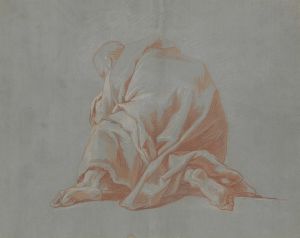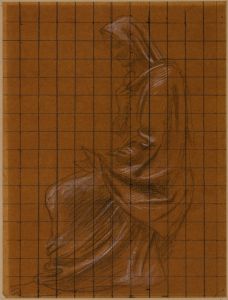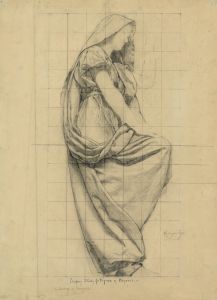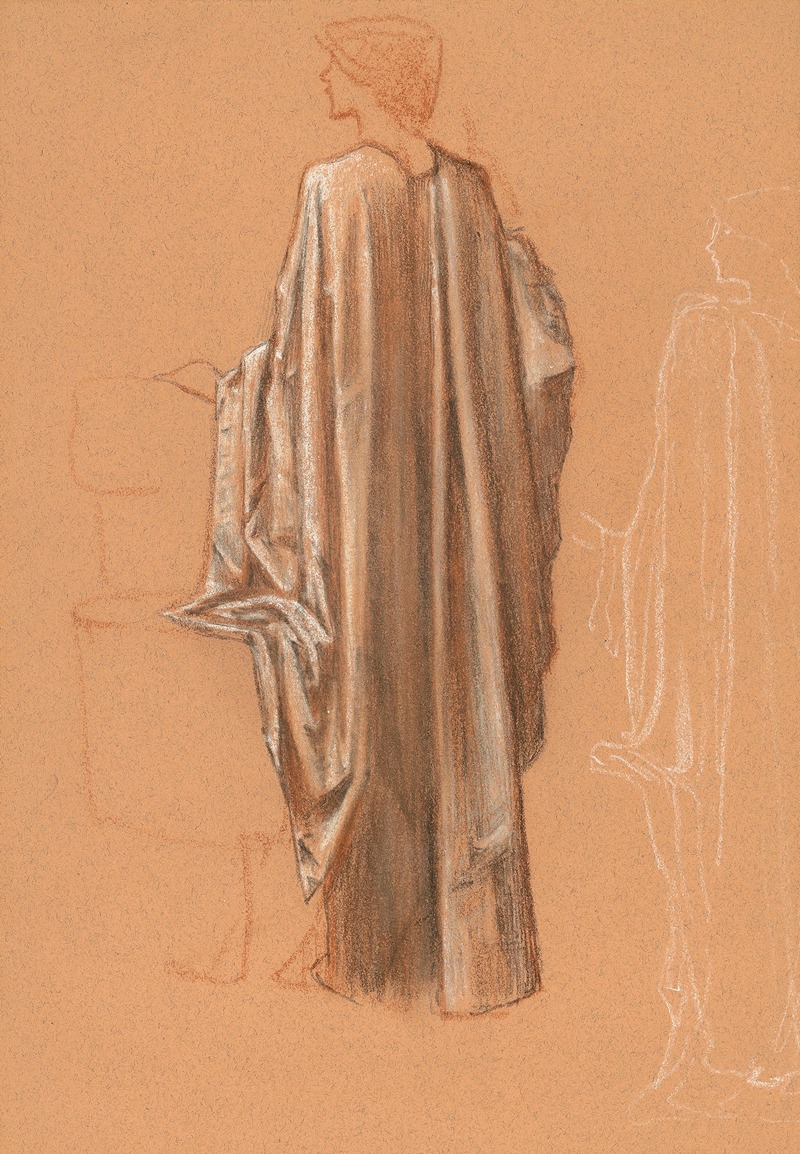
Study for a draped female figure for ‘The Sleep of Arthur in Avalon’
A hand-painted replica of Sir Edward Coley Burne-Jones’s masterpiece Study for a draped female figure for ‘The Sleep of Arthur in Avalon’, meticulously crafted by professional artists to capture the true essence of the original. Each piece is created with museum-quality canvas and rare mineral pigments, carefully painted by experienced artists with delicate brushstrokes and rich, layered colors to perfectly recreate the texture of the original artwork. Unlike machine-printed reproductions, this hand-painted version brings the painting to life, infused with the artist’s emotions and skill in every stroke. Whether for personal collection or home decoration, it instantly elevates the artistic atmosphere of any space.
"Study for a Draped Female Figure for ‘The Sleep of Arthur in Avalon’" is a preparatory drawing by the British artist Sir Edward Coley Burne-Jones, a prominent figure in the Pre-Raphaelite Brotherhood and the Aesthetic Movement. This study is associated with one of Burne-Jones's most ambitious and significant works, "The Sleep of Arthur in Avalon," which he worked on from 1881 until his death in 1898.
The study itself is a testament to Burne-Jones's meticulous approach to composition and detail. It reflects his dedication to the Arthurian legends, a recurring theme in his oeuvre, which he explored with a deep sense of romanticism and medievalism. The drawing likely served as a preparatory work to help Burne-Jones conceptualize the drapery and posture of one of the female figures in the final painting. His studies often involved extensive exploration of form, fabric, and the human figure, which were crucial elements in his larger compositions.
"The Sleep of Arthur in Avalon" depicts the legendary King Arthur in a state of eternal rest on the mythical island of Avalon, surrounded by a host of attendants, including queens and noblewomen. The painting is imbued with a sense of tranquility and timelessness, characteristics that are also evident in the study. The draped female figure in the study would have been one of these attendants, contributing to the serene and contemplative atmosphere of the final work.
Burne-Jones's technique in his studies often involved the use of pencil, chalk, or ink, allowing him to capture fine details and subtle variations in texture and shading. These studies were crucial in the development of his larger works, providing a foundation upon which he could build the complex compositions and rich color palettes that characterized his paintings.
The Pre-Raphaelite Brotherhood, of which Burne-Jones was a later associate, was known for its return to the detail, intense colors, and complex compositions of Quattrocento Italian art. Burne-Jones, while influenced by these principles, also incorporated elements of symbolism and a personal aesthetic vision that set his work apart. His interest in medieval themes and legends, as well as his focus on beauty and emotion, are evident in both his studies and completed works.
The study for "The Sleep of Arthur in Avalon" is an example of Burne-Jones's broader artistic process, which involved a deep engagement with his subject matter and a commitment to achieving a harmonious and evocative final composition. His work, including this study, continues to be celebrated for its beauty, craftsmanship, and the way it captures the imagination.
While the exact location of this particular study may not be widely documented, Burne-Jones's works, including his studies, are held in various collections around the world, reflecting his enduring influence and the appreciation of his contribution to the art world. His legacy is preserved in the meticulous detail and ethereal quality of his art, which continues to captivate audiences and inspire new generations of artists.





